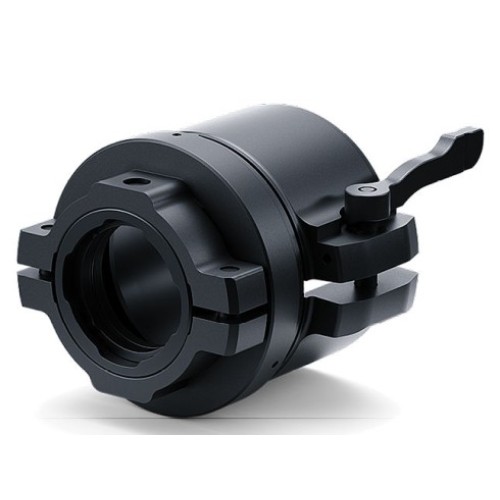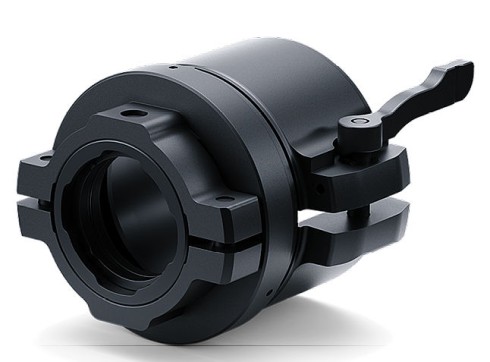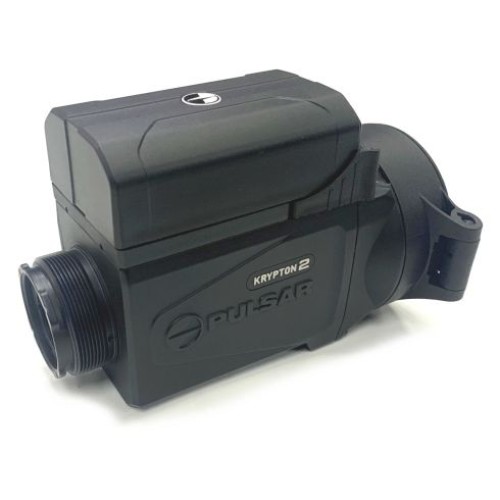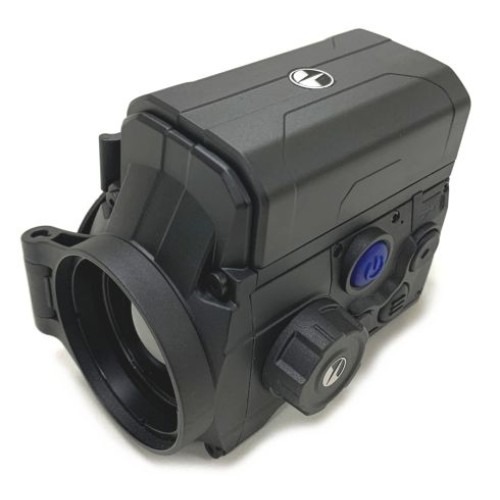Thermal Add-On Devices
Thermal add-on devices are a useful tool to shooters, they offer the benefits of thermal technology whilst also as keeping the benefits of normal optics when the add-on is removed. Thermal and digital technology is limited by sensor and screen resolutions so tighter groups and better image quality will always be achieved through a traditional analogue scope, especially when using higher levels of magnification. Thermal add-ons are attached to the front of a normal rifle scope displaying the target in a thermal format enabling the user to use their scope to see quarry they would not normally be able to see. It also enables shooters to use a rifle that has a day scope fitted outside of its normal useable time period for example they can use it at night as thermal technology does not use visible light often eliminating the need to purchase an additional rifle outfit to use for example at night with a dedicated thermal / night vision scope which would cost far more. Previous generations of thermal add-on did not perform well above 3x - 4x magnification levels as when the scope was zoomed in beyond this level the image becomes blocky and pixalated. As the technology has advanced with increases in the quality of thermal sensors and screen improving in resolution they are now usable to around 8x - 9x magnification before becoming noticeably pixellated. This increase in image resolution enables better quarry identification as well as more accurate shot placement.
Over the years the sensitivity of thermal sensors has increased massively, the size of the thermal sensors have increased, the algorithms that produce the picture we see from the results of thermal sensors have improved and the screens themselves increase in resolution meaning much finer detail can be seen through thermal devices and at higher magnification levels aiding in quarry identification.
Thermal technology and the difference between devices can be a little difficult to understand online, it is much easier comparing units in the flesh which is why we advise prospective buyers pop in and look through them in person however there are several aspects that make up the difference in performance between different models and manufacturers. Each manufacturer has their own algorithm that converts the data collected by the thermal sensor into a picture so some models and manufacturers may show on paper that their device has a better sensor and screen than another but in reality the device with the lower specification sensor and screen actually offers a better clarity image and performance in the field. We also find that when a manufacturer is able to increase the performance of their algorithm they usually roll it out in the form of a product update to all of their devices still in warranty so all their compatible units old and new will benefit from this new found increase in performance.
One specification to look out for when comparing different models is the NETD value; the lower this number, the more sensitive the sensor, allowing lower changes in temperature to be detected resulting in a more detailed image. This is especially important in poor weather conditions where there is moisture, mist and fog in the air effectively clouding the reading of the thermal sensor as the temperature differences detected is effectively diluted by the lower temperature of the suspended water in the air limiting the distance and clarity offered by thermal technology in these conditions. The size of the thermal sensor is important as it gives an increased field of view and collects more data to be processed and shown to the user again for a more detailed image to help with identification. The Micron figure is effectively the space between each thermal pixel in the thermal sensor, if two thermal sensors have the same size ie. 640 x 512 but one has a lower micron value then the sensor with a lower micron value would send through more data points for a more complete thermal image which should result in a better definition image provided the algorithm can process this increased level of data quickly and the screen it is displayed upon to the user has sufficient resolution to display this data, this allows thermal add-ons to perform better at slightly higher magnification levels. Screen resolution is also important as there is no point in having the best thermal sensor and a brilliant algorithm if that data cannot then be displayed at its highest resolution to the end user.
If you have questions or would like any advice on picking the right thermal add-on for you please call us and we can go through the advantages and disadvantages of the models you are interested in.
Sort By:
Filters
Stock Status
In Stock
Out Of Stock
Manufacturer
Pulsar









